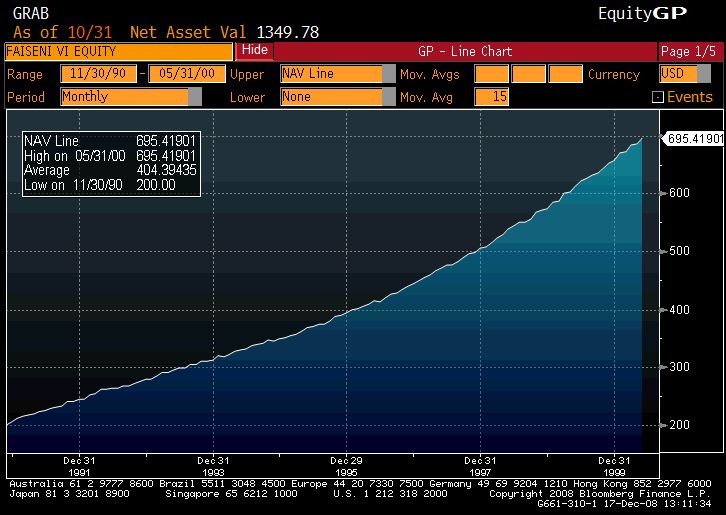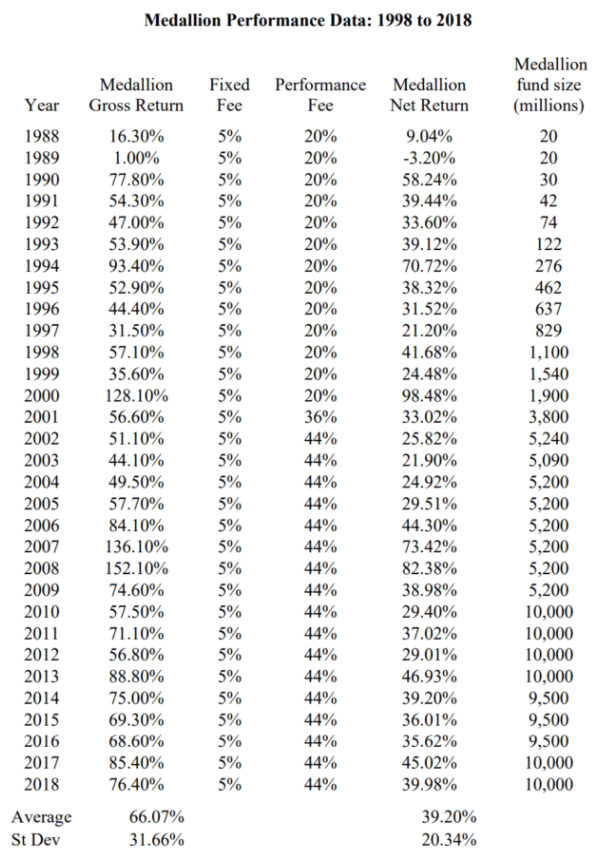One of the most vexing issues for novice traders is the notion that you will not be right most of the time – in real trading, you will be wrong an awful lot. This notion of being consistently wrong but also successful seems like a paradox that many cannot resolve. It runs counter to all life experiences where being right is equated with being successful. It is also the inability to resolve this paradox that is preyed upon by the immense number of shonks in this industry. I have mentioned before that my social media pages have several entries per week from people advertising trading systems with perfect trading records and near linear equity curves such as the one below.
 What gives this one away is the data underlying the curve. You will notice that it claims to have a win rate of 97.76% with only three consecutive losses in the entire trading history. Undoubtedly there will have been people on LinkedIn who saw this and thought it was wonderful and then got suckered in. But it is not only the amateurs on social media who get sucked in. Consider the equity curve below –
What gives this one away is the data underlying the curve. You will notice that it claims to have a win rate of 97.76% with only three consecutive losses in the entire trading history. Undoubtedly there will have been people on LinkedIn who saw this and thought it was wonderful and then got suckered in. But it is not only the amateurs on social media who get sucked in. Consider the equity curve below –
 This is the equity curve of Bernie Madoff – fraudster extraordinaire who managed to fool Wall Street and assorted rich and famous for years. For those interested in looking further into this the book No One Would Listen: A True Financial Thriller by Harry Markopolos is worth a read.
This is the equity curve of Bernie Madoff – fraudster extraordinaire who managed to fool Wall Street and assorted rich and famous for years. For those interested in looking further into this the book No One Would Listen: A True Financial Thriller by Harry Markopolos is worth a read.
However, I want to come back to the notion of actual win/loss ratios in trading. The central mantra in trading is that on average over time the amount you make on your winning trades exceeds by a multiple of some sort the amount you lose on trades that do not work. It is this simple on average and over time principle that traders fail to grasp – it also implies that trading is a grind which is something that new traders, in particular, do not want to hear. Mixed in with this is a healthy dose of ego defensiveness as people don’t like to be wrong and they don’t like to be told they are wrong on a regular basis.
Consider the returns below for the Medallion Fund run by Jim Simons.
 What I find interesting about these returns are the following –
What I find interesting about these returns are the following –
1. The staggering fee structure of the fund. Most hedge funds of this type charge what is known as 2/20. That is a 2% management fee and a 20% performance fee.
2. The level of consistency in the returns.
3. From what I can ascertain the hit rate for the fund is said to be a mere 51%.
Put this hit rate into context with the one noted above in the fake results. The world’s foremost quantitative trader who is worth apparently $US28B has a hit rate of only 51% whereas our fraudster from LinkedIn claims a hit rate of 97.76%.
However, what this demonstrates is that the hit rate is an irrelevancy – what matters is how much you make each time you win versus how much you donate to the market each time you lose. Over the years I have seen hit rates that are even lower than this but which are extremely successful.
It is often said in trading that you have a choice – you can be either rich or right you just have to pick one and whilst this might seem a little simplistic it does make the point that if you are in trading for an ego boost then you are in the wrong place.






True – I think a system needs a reasonable winrate (40% – 60%) though to allow the trader to stick with it. Once systems start getting below 33% I think it’s very hard psychologically for most humans to keep pulling the trigger and deal with the level of drawdown.